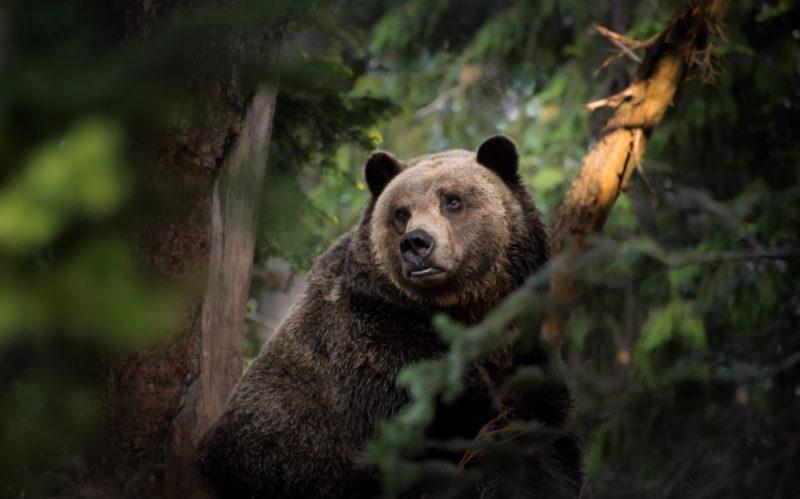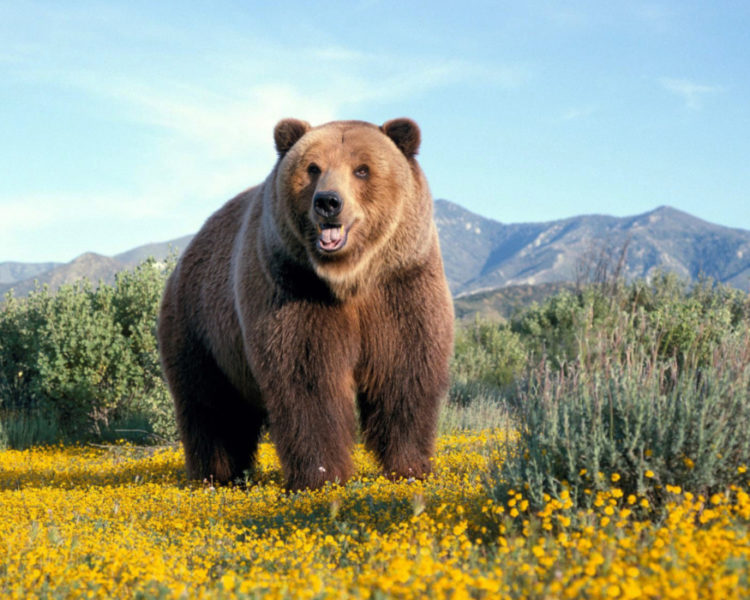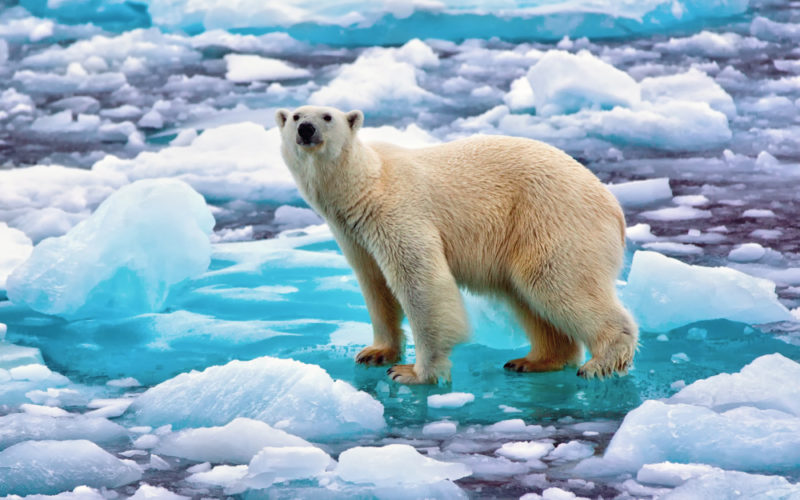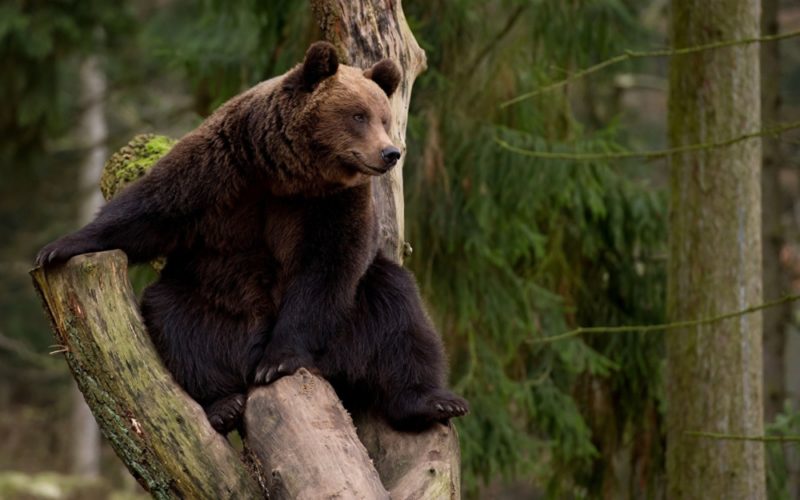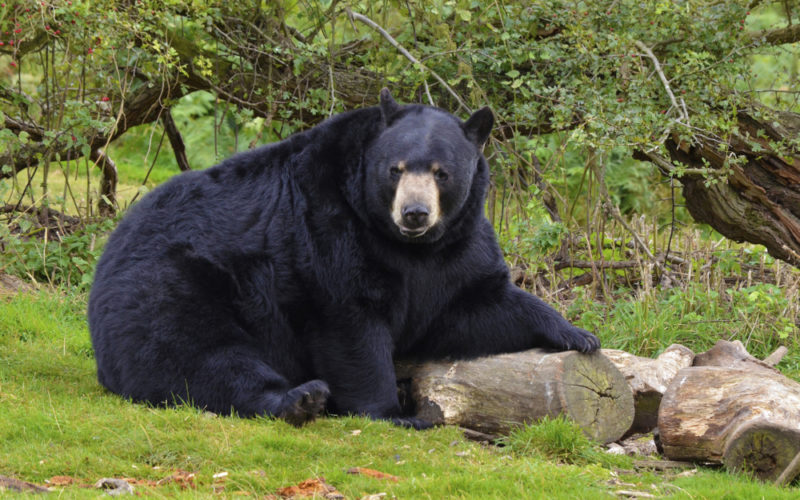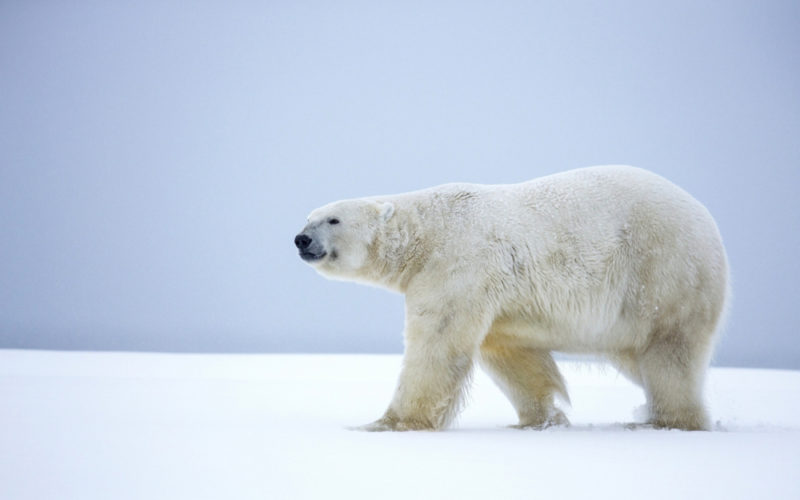In 1935, in Argentina, scientists discovered the skeleton of the prehistoric bear Arctodus. Based on studies of this find, it was found that its growth was 3-4 meters, and the animal could weigh 1.5 tons. The real representatives of this family are not so impressive in size, nevertheless they belong to one of the largest predators on earth. Where it lives and what the largest bear in the world looks like - in detail in the article.
Material Content:
Description of the appearance of the largest bears in the world
In most Russian fairy tales, the clubfoot is described by a kind of clumsy bumpkin, kind and silly. In the wild, the opposite is true. Bears are strong agile predators, good swimmers, can climb trees and run fast. The record was set by the American grizzly, which can move at a speed of 60 km / h. So the external slowness of the animal is deceiving.
Let's talk about the largest representatives of the family:
- The largest is considered a polar bear. In length, it reaches 3 meters, and the weight can reach up to 1000 kg. Medium individuals are not so large. The weight of the male polar bear is 450-500 kg, body length 2-2.5 m. The females are smaller - 250-300 kg, their height is 1.5-2 m. The Arctic bear differs from its brown relatives not only in color, dimensions, but also body structure. He has a long neck, flattened skull, small ears. Massive paws with a hard sole and thick fur allow you to move freely on ice and not slip. Fingers are connected by membranes, thanks to which he swims quickly.
- The brown bear, Kodiak, is longer than the polar one, but inferior to it in the weight category.The body length can reach 2.8 m, the height at the withers 1.6 m, and the weight at the end of summer in males reaches 650 kg. During hibernation, the animal loses up to 20-30% of body weight. Females weigh almost half as much. Kodiak has a large head, powerful jaws and fangs. Not very good vision, which is compensated by excellent sense of smell and hearing. A strong massive body is covered with brown fur, on the muzzle is usually lighter. Paws end with sharp claws. Despite the set of "superpredator", cognac is omnivorous, feeds mainly on fish and plant foods.
- Grizzly bear is an American relative of the brown bear. From Latin, the name of the animal translates as "scary" or "terrible." A distinctive feature of the predator are 15-centimeter sharp claws. Thanks to them, as an adult, he cannot climb trees. A grizzly bear looks like a Siberian brown bear, however, it has smaller dimensions. The weight of a grizzly bear reaches 500 kg, and the body length is 3 meters. His fur has a grayish tint, it was for this color that he got his name, which means "gray", "gray". The head is massive, on a short powerful neck, an elongated muzzle, small ears.
- The Siberian brown bear is inferior to the grizzly in size and strength, but it is heavier. The body length of some specimens is 2.5 meters, weight ranges from 450 to 750 kg. He, like an American relative, has claws, but is half shorter. The fur is brown, or rather, dark brown, on the back and sides of a lighter shade.
- Another representative of the bear with American roots is baribal. Compared to the brown bear, it looks more elegant and inferior in size. Beautiful predatory animal with black smooth fur. The color of the muzzle is yellow, sometimes there is a light shirt front around the neck. The length of his body is about 2 meters, and the weight is in the range of 300-360 kg.
All bears have a very short tail. The owner of the longest process is a brown bear, it reaches 20 cm in it, in the grizzly and baribal it is 18 cm, and in the Arctic it is short, maximum 13 cm.
This is how the rating of the top 5 largest bears in the world looks like.
Habitat and variety
Where do clubfoot predators live? More than 100 years ago, the territory inhabited by the brown bear was vast. Over the past century, it has decreased significantly, but so far this species is the largest in terms of number and occupied territory.
Grizzly
In the wild, these animals can be found in the forests of North America. Grizzly habitat - western Canada, Alaska, northern Mexico.
Grizzlies are omnivorous. Despite the reputation of the formidable beast, the bear predominantly feeds on plants, does not disdain carrion, and sometimes preys on sick ungulates, so it can be safely called a forest cleaner. Its diet includes small rodents, insects, larvae and fish. Fish is a special treat; during spawning, grizzlies cleverly catch salmon and trout walking up the river.
polar bear
The polar bear lives beyond the Arctic Circle, in the northern regions. The basis of his diet consists of seals, seals, fish and small marine animals, sometimes he preys on walruses. Since the white bear is one hundred percent predator, it is important for him to constantly be in close proximity to the sea.
Habitat:
- Svalbard island;
- Northern Bering Sea;
- coast of the Barents and Chukchi seas;
- Wrangel Island;
- Greenland.
The largest population of polar bears lives in the Chukotka Autonomous Region.
Brown
Brown bear is found in Eurasia and North America, Canada, Alaska, Siberia and the Far East.
Its populations are found:
- in the Alps;
- on the Apennine Peninsula;
- in Finland;
- in Scandinavia;
- on the islands of Japan - Hokkaido, Honshu;
- on the Korean peninsula.
In Asia, its subspecies inhabit the territory of Palestine, northern Iran and Iraq.
Brown bear - the owner of the forest, leads a sedentary lifestyle. Like most of its relatives, it is omnivorous, for the most part consumes plant foods. Supplements its diet with rodents, reptiles, feasts on insect larvae, fish.Prefers impenetrable taiga, marshland. In mountainous areas, he lives in mixed forests, near gorges and small rivers.
Kodiak
The only place you can see this animal is the southern coast of Alaska. The archipelago (island) of Kodiak, which is named after the bear, is a protected area.
The predator is based on fish, therefore, from mid-spring to early autumn, it hunts on the banks of rivers, catching salmon. Eats berries, roots, algae. It does not disdain carrion, sometimes it kills small animals. But more often, he prefers living prey to the search for plant foods.
Baribal
The black predator is widespread in North America - it inhabits the forests of Alaska and Canada, dividing the territory from the grizzly. Found on the banks of the Mississippi River, in the central and western regions of Mexico.
Like all clubfoots, it eats plants, berries, fish, and loves honey very much. He replenishes protein reserves by consuming insects and their larvae. Occasionally preys on deer and elk. Baribal perfectly climbs trees, and therefore, sometimes there are birds and eggs in his diet.
The hunt for the largest representatives of this species
Arctic bear hunting is prohibited, since this species is on the verge of extinction. It is listed in the International Red Book and the Red Book of Russia, all representatives of this species are less than 25 thousand.
However, this does not prevent poachers from shooting up to 200 animals per year for their skins.
In addition to illegal fishing, the reduction in the number of animals is greatly affected by changes in climatic conditions - warming and rapid melting of ice.
The brown bear, inhabiting the Kodiak archipelago in Alaska, is also on the verge of extinction. Its number is about 3 thousand. Only because it was decided to protect the species, Kodiaks exist to this day.
It is allowed to shoot up to 150 individuals per year.
In 1975, the U.S. Fisheries and Wildlife Services listed grizzlies as a threatened species. To date, the situation has changed - the bear population has increased. Residents of states that suffer from excessive attention from predators seeking additional food sources have demanded that they resume their hunt. The matter went to trial and ended in favor of a grizzly bear; hunting for them was not allowed.
Baribal is under the protection of the American state, it is allowed to hunt only occasionally in order to stabilize the growing population. In 2015, for the first time in 20 years, the black bear hunting season opened in Florida. A total of 320 shooting licenses were issued.
Limited hunting is currently permitted in the United States and Canada, but is prohibited in Mexico.
In Russia, hunting for a brown bear is limited by law; in some areas of its habitat it is completely prohibited.
Since 2011, new rules have come into force, according to which it is forbidden to hunt:
- on bears in the winter, when they are in dens;
- on bears with young animals under the age of one year.
According to these rules, the period during which you can hunt clubfoot has also been reduced - in the spring (from April 1 to May 31), and then at the end of summer and all fall (from August 1 to November 30).
Previously, the rules allowed hunting for bears during hibernation, which means that the bears with offspring became prey.
Entered predators in the Guinness Book of Records
There is still debate about who to recognize as the largest bear in the world - the Arctic or Kodiak. Is it a joke to catch such a predator and take measurements from it.
According to the Guinness Book of Records, the largest named polar bear, which was able to weigh and measure. According to one version, its weight was 1.02 tons, according to another - 0.9 tons, body length - 3.5 m.
The largest kodiak died in the Colorado Zoo (USA) in the middle of the last century - the giant was 3 meters tall and weighed 750 kg. However, there is no mention of him in the book.
And the most popular in 2018, according to Guinness, was the clubfoot hero from the Russian cartoon "Masha and the Bear." The episode with porridge was watched on YouTube a record number of times - more than 3 billion, which earned its place in the famous book.


